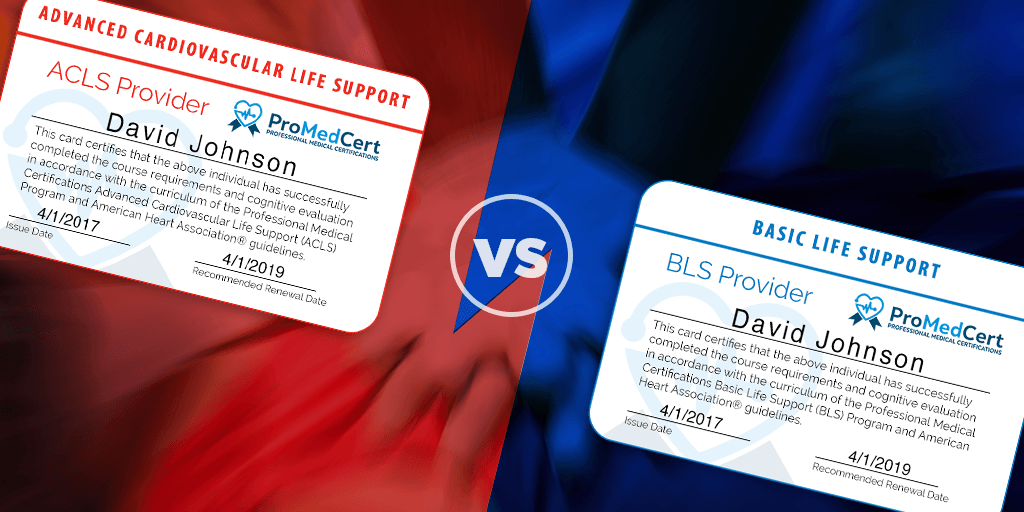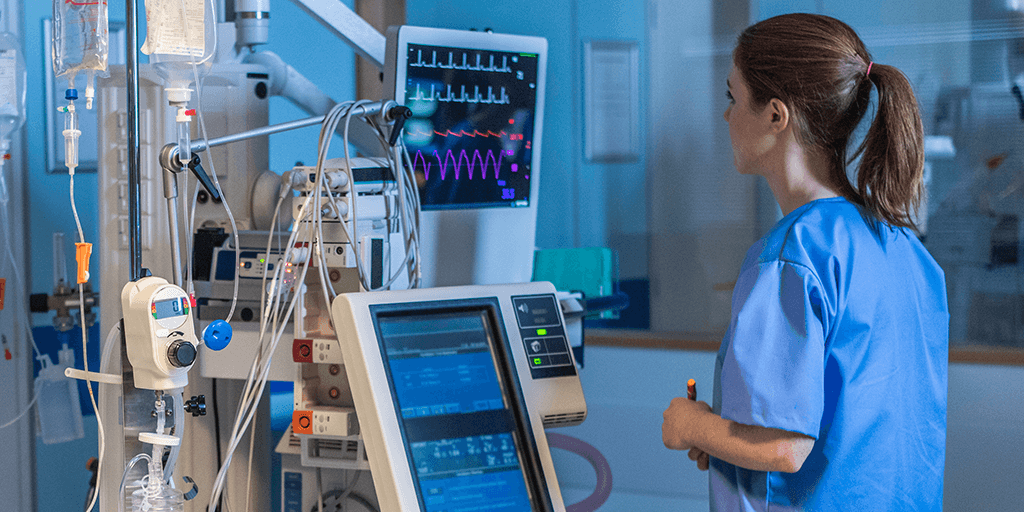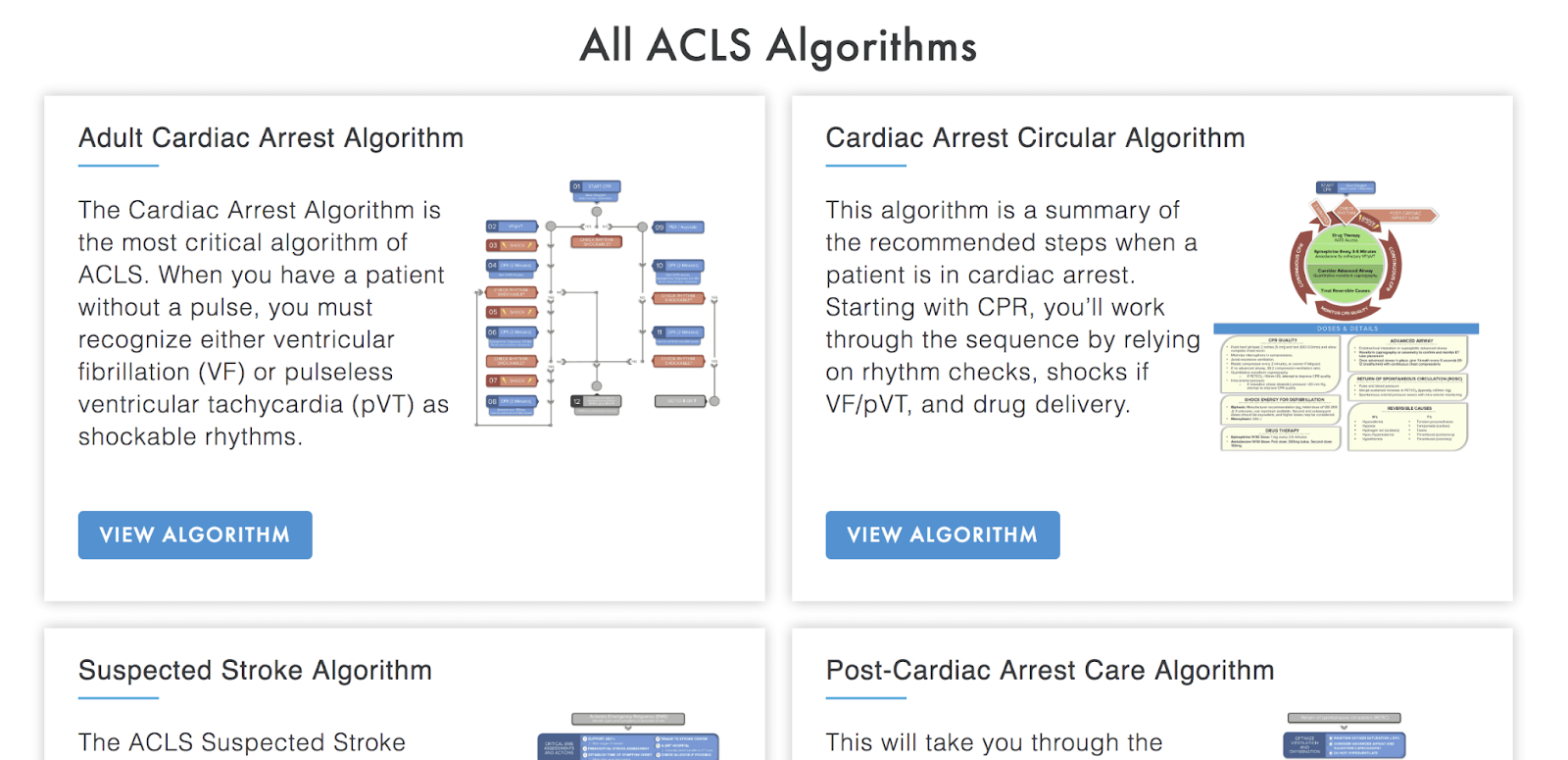ACLS vs. BLS – What’s the Difference?

If you’re new to the healthcare industry or are just starting your journey, figuring out the difference between the various medical certifications can be challenging.
For instance, Basic Life Support (BLS) and Advanced Cardiac Life Support (ACLS) are very similar in that they share the same objectives of learning the proper techniques for delivering life-saving care to someone suffering cardiac arrest.
Beyond this, however, the ACLS vs. the BLS certification feature some marked differences. Let’s take a look.
Audience

As the name implies, BLS training is all about the basics.
For some, BLS certification and its coverage of basic CPR and other life-saving techniques can be sufficient for their chosen career path.
These individuals might include teachers, coaches, childcare professionals, and anyone working with large groups of people.
For those pursuing careers in the healthcare industry, however, BLS typically serves as the foundation for additional knowledge upon which the ACLS course and more in-depth training are required.
Background

Possessing a background in healthcare isn’t necessary to take and complete a BLS or ACLS course.
Students taking the latter are typically required to have completed their BLS and possess a certain degree of medical knowledge.
For example, a significant portion of the ACLS exam will likely cover the topic of reading and understanding ECG results, which is covered on a basic level in the BLS.
Having this foundation before taking ACLS is strongly recommended.
Medication

Because of its basic nature, the BLS (vs. the ACLS) coursework does not contain any training or guidance regarding administering medications and other pharmaceuticals in medical emergencies.
Conversely, ACLS training and certification do include this information. In your ACLS coursework, you will learn about various drugs, their usage, and mechanisms of action.
When you get your ACLS certification, you will know which medications are necessary in various scenarios, at what dosage, and how to administer them.
Tools/Materials/Resources
While the use of an automated external defibrillator (AED) is covered in the coursework of both BLS and ACLS, the latter also covers the use of additional tools and equipment, such as intravenous medications and intubation materials, to name a few.
ACLS coursework also includes emergency algorithms that medical professionals must know to administer life-saving care to a critical patient.

Conclusion
These are some of the many differences that exist between the BLS and ACLS coursework material and exams. One is basic life support and one is advanced cardiac life support; one is made to be generalist and beneficial in a broad swath of scenarios while the other is more detailed and more specialized to pertain to heart-specific life support needs.
If you’re not entirely sure about whether you need an ACLS vs. a BLS certification, feel free to reach out and contact us with any questions you may have.
We’d be happy to point you in the right direction and ensure the online medical certification you end up with is the precise one you need to advance your career.
Click here to send us a message. Someone from our team will be in touch shortly!

